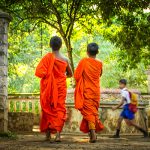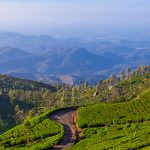The Sri Lankan Leopard
Covered in dark spots set in a tawny coat of fur, the Sri Lankan leopard stealthily walks about surveying his surrounding for his next meal, unaware that scores of wildlife enthusiasts are driving around the Yala National Park in the hope of spotting him.

Recognised as one of the island’s most prized treasures, the Sri Lankan Leopard is an endangered sub-species native to the island. First described in 1956 by renowned local Zoologist Dr. Paulus Edward Pieris Deraniyagala, the Sri Lankan Leopard (scientifically known as Panthera pardus kotiya) can be found in different habitats including montane forest, tropical rainforest and arid scrubland.
Leopards are the largest predator in Sri Lanka’s wilderness, as there are no other big cats such as lions and tigers. The Leopards vary in colour, from straw-yellow to bright golden brown, spotted with black spots and rosettes. They are mostly sighted in the Yala National Park located Deep South of Sri Lanka, which has one of the highest densities of leopards in the world.

These solitary hunters are highly adaptable predators – whilst they prefer hunting at night, they are also active during dawn and dusk – and are usually seen alone. However, social groups (such as mothers and cubs) and courting pairs are spotted more commonly in Yala National Park than in other leopard populations. Both sexes live in overlapping territories, with the ranges of the males overlapping the (smaller) ranges of several females. Like most cats in the wild, the Leopard’s choice of prey includes smaller mammals, reptiles, birds and some larger animals including buffalos and wild boars, with a special emphasis on Spotted Deer which are found in abundance in the dry zone.
Classified as an endangered species by the International Union for Conservation of Nature (IUCN), the leopard population in Sri Lanka is under threat as a result of habitat deconstruction, forest fragmentation, trapping and hunting.
Although several research programmes have been conducted on Sri Lankan leopards, there’s still much to be studied on the status, ecology and behaviour of this feline. Leopard Trails, a Sri Lankan company which offers bespoke luxury tented camping near Wilpattu National Park and Yala National Park, has devised its own method of identifying leopards during the many safaris they organise for their guests, in the hope of documenting the life stories of these creatures.

Wildlife aficionados at heart, the founders of Leopard Trails have been working on methods of identifying the Leopards that are found in Block 1 of the Yala National Park, which is known for having the highest concentration of leopards in the island. Their previous method of using a Leopard’s forehead pattern, although accurate, was harder to document, and was sometimes susceptible to change when cubs grew into adults. After frequent visits to Londolozi, a private reserve in the Sabi Sand in South Africa, they witnessed the ‘spot pattern ratio identification technique’ being conducted successfully, and implemented the same method in Yala.
Leopard Trails has now managed to identify 55 leopards living in Block 1 in Yala with information on their sex, lineage, places sighted and roaming areas. Each identified leopard is named after its spot ratio and the name of the place where they were first sighted. Some even have nicknames, given to them by the Leopard Trail Game Rangers.
Leopard Trails hope that they will be able to use this information on Sri Lankan Leopards to contribute to the conservation and protection of these species.




